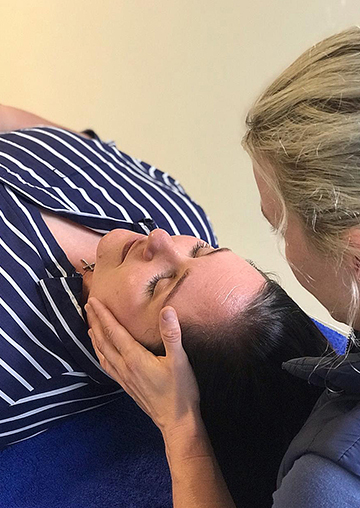Our Therapist
Georgina believes that a detailed assessment with good diagnosis is key to treating each individual. She is passionate about helping her patients understand their condition and involves them in their recovery.
Her aim is to treat the cause of the patient's problem and not only the symptoms. She gives her patients the tools to regain their pre-injury functional status and to make and maintain long-term improvements. She uses manual therapy as well as rehabilitation to treat each patient holistically.
Georgina sees out-patients in her rooms at 14 Discovery Street, George, as well as home-based patients within the George area who are unable to leave home due to injury or post-surgery.
She has furthered her studies in Orthopaedic Manipulative Therapy (OMT) which involves specialised muscle, joint and nerve assessment and treatment.
About Us
After graduating from the University of the Witwatersrand Georgina gained experience in paediatrics, ICU and orthopaedics at Baragwanath Hospital.
She has practiced in orthopaedics at Sandton Medi-Clinic in Johannesburg for many years, treating patients following a wide range of surgeries. This complemented her out-patient practice, where she completed her patients’ rehabilitation. This is where Georgina’s passion for treating child-specific conditions began.
Sport and the outdoors are part of her life. She is a competitive CrossFit athlete and has completed her CF-L1 certification.
She incorporates her understanding of functional fitness in her patients' rehabilitation.


What is Physiotherapy
A registered physiotherapist is a first line practitioner, therefore a doctor’s referral is not required, you can go straight to the physiotherapist.
A physiotherapist uses hands on treatment to restore muscle imbalances, correct postural and movement problems and rehabilitate with exercise prescription and progression. This involves massage, joint manipulation, exercise and other treatment modalities. Physiotherapy is also key to the recovery process after surgery.
Physiotherapy involves a detailed assessment and treatment of the individual with a good explanation so that you are involved in the recovery progress. This allows you to better understand what leads to the injury as well as the recovery timeline so that return to activity or sport is introduced at the right pace.
An assessment is key to determining the cause of the problem. This allows for fewer treatments, less risk of re-occurrence and a faster rate of recovery.
